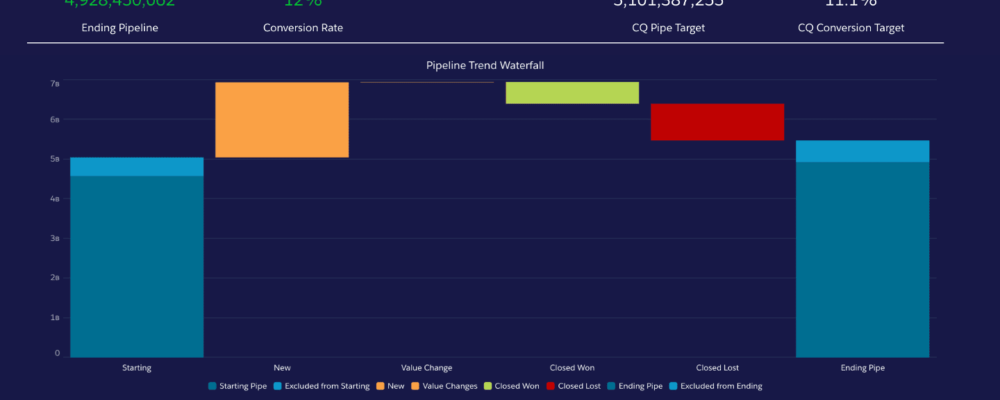
For kids, it’s back to school season. For software-as-a-service (SaaS) companies, it’s time to start planning for the next fiscal year—including figuring out the details around all-important sales territories for sales reps.
Right now, many companies are putting together draft annual sales plans complete with people, quotas, costs, and more detailed items like ramp times and attrition all factored in. Because hiring takes time, sales and finance teams are also working together to determine any future hiring to make the plan a reality.
Most companies are already on top of this type of planning. But I’ve seen far too many companies overlook the need to get granular about another critical aspect of sales planning—how to organize specific sales territories and plan for their growth—and communicate those plans to the team in a clear and transparent manner. This type of planning is critical to your sales team’s success, which means it’s critical to your company’s success.
Let’s look at one typical scenario: A company’s plan for the new fiscal year requires the sales team to grow from 12 account executives (AEs) to 18. But because hiring, again, takes time, the plan launches on January 1 with just the 12 original AEs on board. So, every few months, the sales team leader has to go to the team and tell them that a new AE is starting—and their territories are being reduced to make room for her. Now the team is frustrated, slighted and upset. And they’re about to have the same upsetting conversation five more times as five more AEs are hired to fill out the team.
The most successful companies get ahead of this problem by setting clear expectations with their sales teams as they’re creating their plan for the upcoming fiscal year. The goal is to build a plan including clear territories upfront, and transparently communicate that plan to everyone.
Let’s look at how you can make this work with your team:
Step 1:
Build your plan for the 2024 fiscal year. Model it in detail so you know when you’ll need any new sales reps to start, what their on-ramp will be, and anticipate any necessary attrition plans.
Our previous post, Building Next Year’s Sales Plan: Doing It Right and Avoiding Common Mistakes, provides best practices for this initial step.
Step 2:
Once you have your targeted number of AEs, start building their actual territories. In our example above, we’re growing from 12 to 18 AEs, so this means creating the 18 actual territories in advance—not waiting until new team members start to re-allocate the pie. Detail is important here, so whether your definitions are based on ZIP code, segment, account, standard industrial classification code (SIC code) or a mix of these, do the work now. Give each territory a name for easy reference.
Step 3:
Designate each of the territories above as a primary or secondary territory. On day one of your new fiscal year, you will deliver these territories to your existing AEs. Clearly communicate to each sales rep what their primary territory is. They will own these primary territories all year. Next, assign each rep a secondary territory, and explain that they will hold these territories until new hires join the team.
Step 4:
Let the team know when your planned new hires are expected to start. Now your sales reps know that their main focus should be on their primary territories, but they have additional selling opportunities in their secondary territories until these dates, clearly planned in advance.
Step 5:
Define a holdout plan. When each new hire starts, one of your reps will hand his or her secondary territory over to the new AE. But what about the previous AE’s existing pipeline? You need a transition plan that enables the previous AE to finish closing out the deals she has in progress before the new AE takes over the territory. Create your holdout plan and clearly communicate it in advance. If you have a fast sales cycle, a one-month transition period may be reasonable. And make sure you’re clear about the details, so the previous AE can’t stake a claim to every potential customer they’ve ever sneezed at. Set expectations that a potential deal has to be at a later stage or a certain priority level to remain the prior AE’s responsibility.
We all know that plans change. You may outperform your plan and decide to push to grow faster. Or, you may not achieve your goals and need to slow down your timeline. These realities will affect how fast you hire and reassign those important territories. While you’re setting expectations, be clear that you reserve the right to alter the plan based on actual performance.
This isn’t rocket science. It’s just a simple planning change that will make your AEs’ lives (and yours!) a lot better in the following year.
This material is provided for informational purposes, and it is not, and may not be relied on in any manner as, legal, tax or investment advice or as an offer to sell or a solicitation of an offer to buy an interest in any fund or investment vehicle managed by Battery Ventures or any other Battery entity. The views expressed here are solely those of the author, Bill Binch.
The information and data are as of the publication date unless otherwise noted.
The information above may contain projections or other forward-looking statements regarding future events or expectations. Predictions, opinions and other information discussed in this publication are subject to change continually and without notice of any kind and may no longer be true after the date indicated. Battery Ventures assumes no duty to and does not undertake to update forward-looking statements.
“Battery Ventures is an American technology-focused investment firm. Founded in 1983, the firm makes venture-capital and private-equity investments in markets across the globe from offices in Boston, Silicon Valley, San Francisco, Israel and London.”
Please visit the firm link to site





